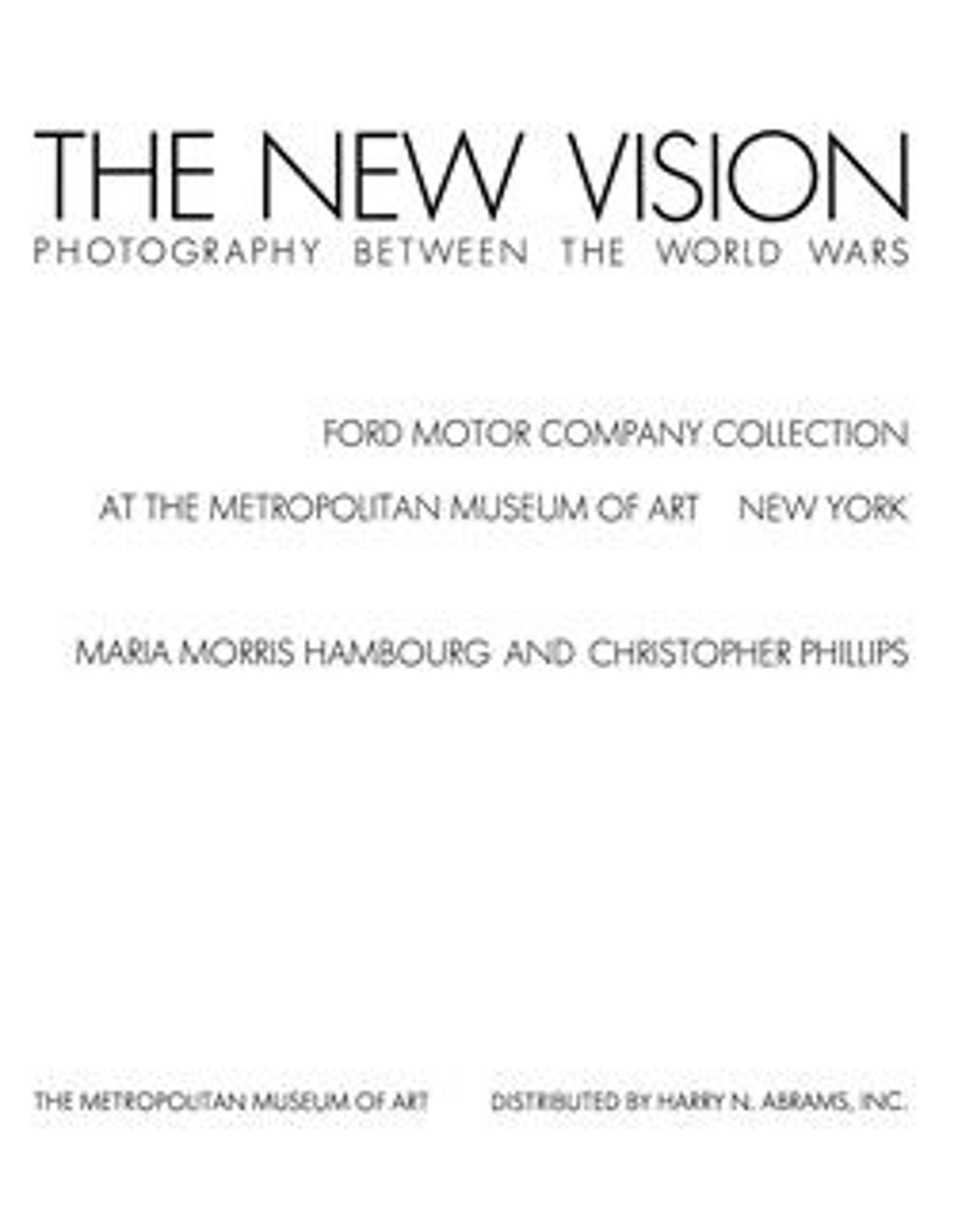The New Vision: Photography between the World Wars. The Ford Motor Company Collection at The Metropolitan Museum of Art
A decade after the establishment of the Department of Prints in the fall of 1916, the Metropolitan Museum began to collect photographs. The keystone of our holdings is the work of Alfred Stieglitz and a matchless collection of photographs by his most talented contemporaries that he gave to the Metropolitan in 1933. Stieglitz and his fellow Photo-Secessionists, working in soft-focus painterly techniques, won for the medium a large measure of respectability in the two decades before World War I. After the war a new generation of photographers turned from painterly styles and took radically different directions. Some of these young artists espoused the aesthetic principles of avant-garde movements—dadism, futurism, surrealism, constructivism; others were unaligned. But they all shared the belief that photography provided the appropriate technology and methods to record modern life. Indeed, much of the most progressive art of the 1920s and 1930s owes a great debt to their photographic visions.
Although photography is now the most ubiquitous and generally accessible of modern art media, it is not widely recognized that many of its forms—which today seem most new and which have been borrowed by modern painters—were discovered and creatively explored over half a century ago. Indeed, the photographs of the interwar period lie at the origin of our culture's visual sense of itself. These pictures are intriguing and often beautiful; if their lessons are not always easy, we are confident that the viewers' efforts will bring rich rewards.
Met Art in Publication
Citation
Hambourg, Maria Morris, and Christopher Phillips. 1989. The New Vision: Photography between the World Wars: Ford Motor Company Collection at the Metropolitan Museum of Art, New York. New York: Metropolitan Museum of Art : Distributed by H.N. Abrams.
